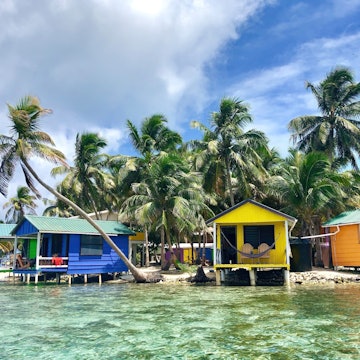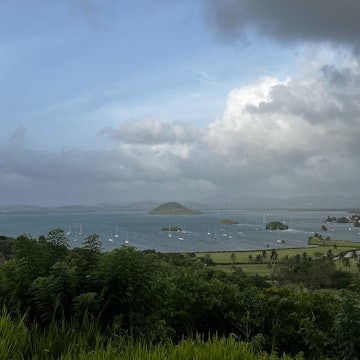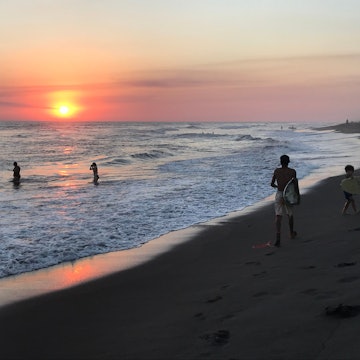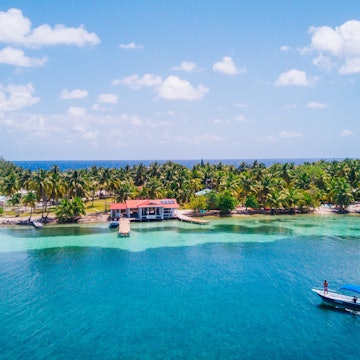

Plaza de La Revolucion, the square in Managua, Nicaragua, is bound by Catedral de Santiago on its east side. PixieMe/Shutterstock
Nicaragua’s capital makes a dizzying impression on first-time visitors. As international flights touch down at Managua International Airport on the eastern edge of this amorphous metropolis, you’ll notice that the city has no definitive center, only blankets of sprawl, billboards and vehicle-choked avenues.
The reasons for this are tragic: a devastating earthquake in 1972 leveled almost everything, and redevelopment has followed an unflattering pattern of low-density commerce and impersonal neighborhoods.
But don’t fret: Managua has loads of pleasant hotels, helpful services and international chains, including two Walmarts. Once you settle in, you’ll find residents accustomed to travelers, and the waterfront is a crash course in post-revolution patriotism. The city also offers a nice range of restaurants and healthy nightlife that’s handily located near the better hotels.
Here are the top things to do in Managua.

1. Explore the Palacio de la Cultura y Biblioteca Nacional
Standing on the Plaza de la Revolución, the colossal complex that is the Palacio de la Cultura y Biblioteca Nacional has witnessed history numerous times since its completion in 1935: until 1994, Nicaragua’s congress convened here; in 1972, an earthquake shook its walls but somehow left it unscathed, even as the surrounding neighborhood crumbled to dust; in 1978, it became a flashpoint when guerrilla rebels commandeered the building and took officials hostage, marking a turning point in the Nicaraguan Revolution and increasing global interest in the Sandinistas.
Today, the Palacio is a voluminous museum, with gorgeous courtyards, vast exhibition spaces and the country’s best curated displays. The many chambers are dedicated to a range of subjects: a section on natural history illustrates Nicaragua’s volcanic formation. An impressive collection of indigenous pottery provides a sketch of pre-Columbian life. The Sala Armando Morales (Armando Morales Gallery), named after Nicaragua’s most famous painter, showcases works by contemporary artists.
Planning tip: The museum has an open-air feel, which also means there isn’t any air-conditioning, but it provides a welcome escape from sun or rain. The courtyards, with their benches and sculptures, are a hawker-free place to sit and reflect. The museum is open every day except Monday.
2. Cool off at a local waterpark
This whimsical waterpark looks completely out of place on Managua’s lakefront, but no matter: it’s a refreshing place to cool off on a hot day, especially for families. Located in the lakeside Paseo Xolótlan, Parque Acuáticox is easy to find, cheap to visit and offers some great views of Lago Xolótlan.
More than just a bunch of pools and slides, it’s also designed to celebrate Nicaraguan landmarks and points of pride. The waterpark reopened in 2022 after significant renovation; the expansive play structures are mostly new, along with sculptures of an airplane and pirate ship.
Planning tip: The grounds have their own parking lot and a gated perimeter, so even the smallest children are safe from the busy road.

3. Stroll the Malecón
The Malecón (waterfront promenade) is a 2km stretch of walkways and public parks along the edge of Lago Xolótlan. This area is generally empty during daylight hours but comes alive around sunset when the enormous metal sculptures of trees (the Árboles de la Vida) are lit up.
Here is also the Boeing Poder Ciudadano ("Boeing Citizen Power"), a passenger jet permanently parked there. The plane attracts mostly kids and aviation enthusiasts, who can step inside, walk down the rows of vintage seating and examine the cockpit’s old dials and controls.
Detour: East of the port is the Paseo Vieja, a scale model of downtown Managua as it appeared before the earthquake of 1972. This nostalgic display celebrates the beauty and cohesion that the capital once enjoyed. Unveiled in 2014, the outdoor miniatures represent 13 important blocks, including a handful of buildings that still stand.
4. Root for the home team
Nicaragua’s true national pastime? Baseball. This is pretty unique in football-obsessed Central America, and it has an unusual origin story: US businessman Albert Addlesberg visited the Caribbean town of Bluefields in the 1880s, where he explained the game to locals, and its popularity grew like wildfire.
Today, the Liga de Béisbol Profesional Nacional holds up to five games per week in the Estadio Nacional Soberanía in the very middle of Managua, and tickets often cost less than US$1. There isn’t much around the ballpark in terms of pre-gaming or entertainment, but the large parking lots are easy to reach by taxi, even on busy game days; expect a 15-minute ride from either the Managua waterfront or 10 minutes from most Los Robles hotels.
Planning tip: Tickets must be purchased at the gate. While the stadium has a seating capacity of 15,000, it’s still wise to show up at least half an hour before the first pitch.
5. Explore Managua’s nightlife nexus
For whatever reason, a gauntlet of bars and clubs has sprung up along Avenida Principal Los Robles, making this strip the city’s de facto entertainment district. The Los Robles neighborhood is also peppered with hotels (try Hotel Los Robles or La Bicicleta Hostal), and relatively nice sidewalks make it a walkable destination, even in the wee hours. Pounding music can get loud around weekends, but most hotels are located a merciful distance from the clubs.
The venues cater to a wide range of tastes, from carnivores and craft-beer lovers to late-nighters in search of a deafening dance floor. One of the best stops is La Zona Food Park, a paved lot with picnic tables and rows of stalls. Additional food trucks are parked on the street outside. Start at La Estación Central for craft beers and a scrumptious pub menu, and continue to the outdoor cocktail bar of Mr Ceviche for ceviche and craft cocktails, and Bar Rustic House for overflowing nachos and all the Toña lager you can drink.
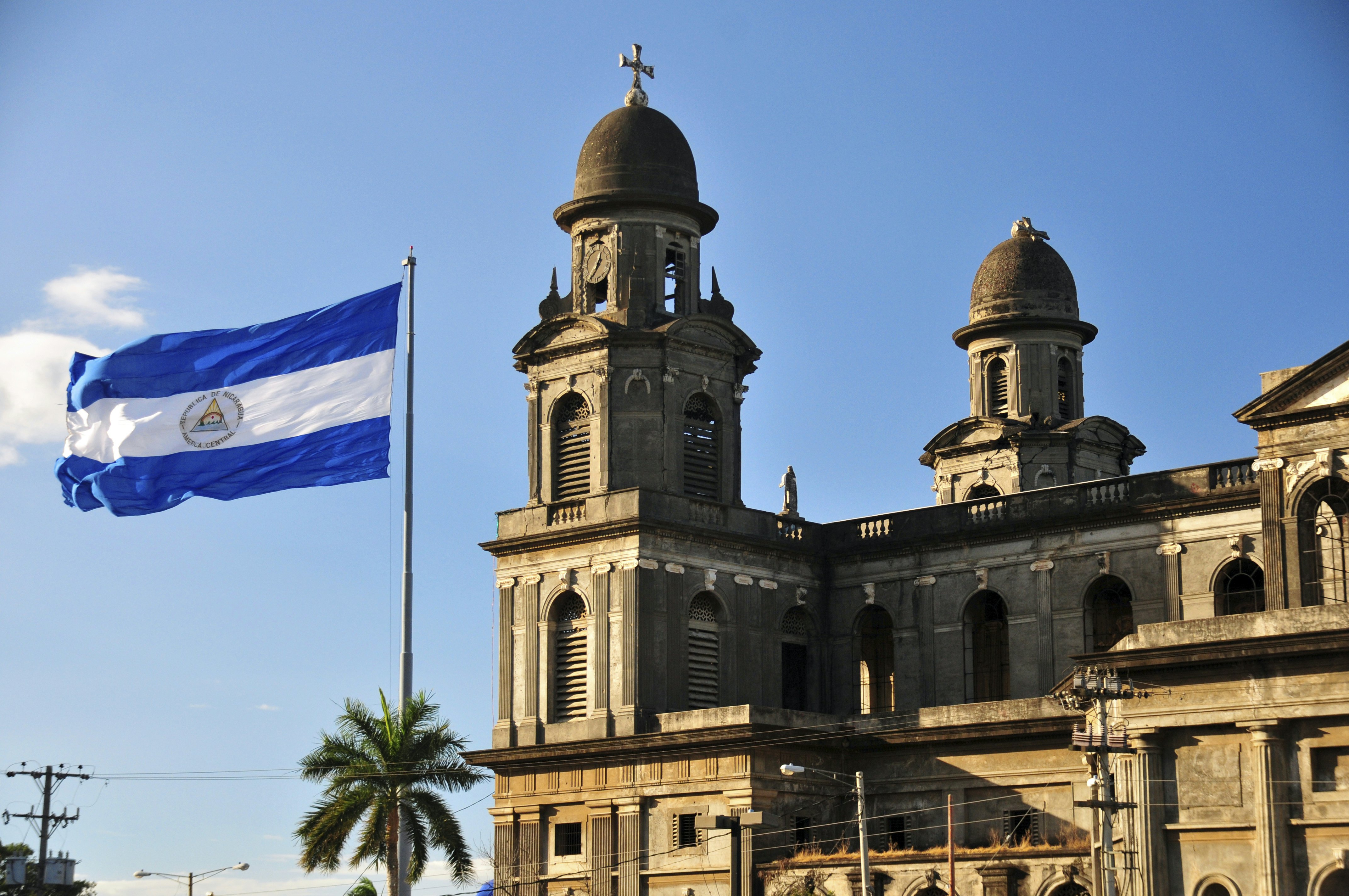
6. Visit the cathedrals
See the Catedral de Santiago (St James Cathedral), a masterwork of pillars and domed towers, as the surrounding palm trees accentuate its tropical aesthetic. You might believe that these weathered stone walls were first erected by conquistadors some centuries ago, but the cathedral is actually much newer: Belgian architect Pablo Dambach designed and oversaw the completion of this neoclassical beauty in 1938.
Today, it’s one of the few vestiges of Old Managua; the church survived the earthquake of 1972, but damage to the interior has left it off-limits to visitors. Still, the cathedral is a stirring monument from the outside, and visitors can try to peek through its openings and take pictures out front. The main entrance stands to one side of the Plaza de la Revolución, making it as central as Managua gets.
A second cathedral, the Catedral Metropolitana (Metropolitan Cathedral), stands about 3.4km south, off a busy highway right across from the Estadio Nacional Soberanía. The Metropolitana is Santiago’s opposite in appearance: more bunker than church, the walls are modernist concrete with a single tower and 63 white domes. The cathedral holds regular services and events; inside is a life-size diorama of the crucifixion.

7. Get tickets for a live show
Managua offers a variety of live entertainment. For example, the Teatro Nacional Rubén Darío is the most renowned theater in Nicaragua. It survived the 1972 earthquake and seats 1200. And next to Parque Las Palmas, the Sala-Teatro Victor Romeo is a small theater that specializes in dance and music.
For traditional musicals and family-friendly theater, consider the Plaza de la Fe Juan Pablo II. The downtown square, with its obelisk named after Pope John Paul II, is the keystone of major Nicaraguan holidays.
This article was adapted from Lonely Planet’s Central America guidebook, published in October 2025.








